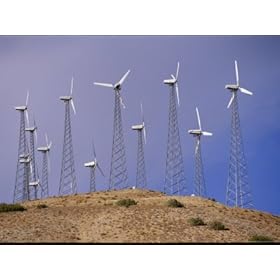Earth Day 2010 is April 22nd.
Posted in Environment, Hearth and Home on April 21st, 2010For the past several years, we’ve taken part in Earth Hour but this year somehow — probably lack of promotion on the net — we totally missed it. Not such a bad thing because we do as much as we can every day of the year. We recycle and for us that means we have to drive to the recycle center once a week, although only as part of our normal shopping cycle. We tend to put water in a water bottle rather than buy bottled water. We keep our heat down in the winter and our air conditioning higher in the summer (forget saying turn it off completely we live in an area that gets days over 100 degrees). We use the car to go to and from work (no public transport closer than work). We plan our weekly shopping trips to be as efficient as possible using gas. We’re saving to make take some more measures — replacing the single pane windows in the house, purchasing a hybrid car, swapping out the 20 year old appliances for EnergyStar ones.
We live on 5 wooded acres and have little direct sun during the day. Solar is out for us but we’re looking into other options. But that’s a long term project.
Earth day is a time to think about our commitment to the Earth and strive to live lightly upon it. Here’s a video about Earth day and what it’s trying to get people to think about. Granted it’s by a vested interested party but that doesn’t take away from the core message:
It seems that here in the US there are many people who prefer to put their heads in the sand and pretend that the Earth has infinite resources and all this “green” talk is not worthy paying attention to. Our planet is where we live, work, and play. But it’s resources are indeed finite. There was a recent report that the world will reach peak oil (that point where it cost more to extract the oil and you could possible get from using/selling it and which is the beginning of the end of that resource) within the next 10 years. Others say we’ll reach that point in 5 years or 2 or we’ve already reached it. Note that none are saying it’s not going to happen.
There’s a definition of insanity that I find very cogent. Insanity is doing the same activity over and over and expecting a different result. We can’t go on using petroleum/gas/oil and expect that it won’t someday run out. If we start now putting money into alternative energy sources, we not only help our planet, we help ourselves.
Closing our eyes to the problems of global warming, peak oil, deforestation, water contamination, and species loss will not make it go away. We need to look these problems in the face and come up with plans that deal with what is not what we wish it was.
Take some time on Earth Day to decide how you and your family will do their bit to help save the Earth and its resources. Even something as simple as turning lights off when you leave the room or filling your own bottle with water will help. Every little bit does help and certainly it helps more than doing nothing. Take action to help our planet.



